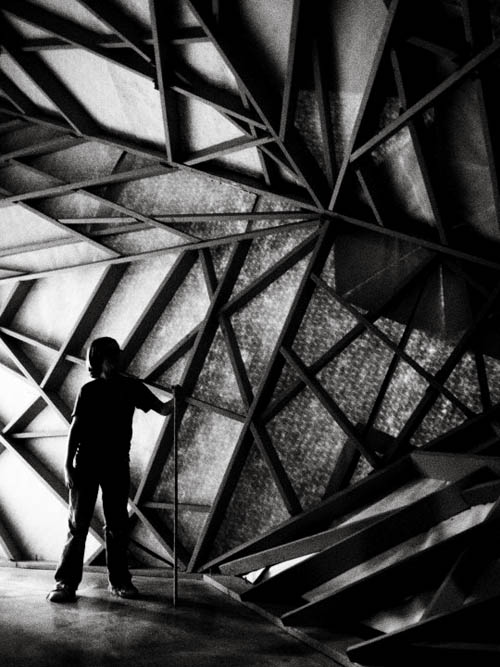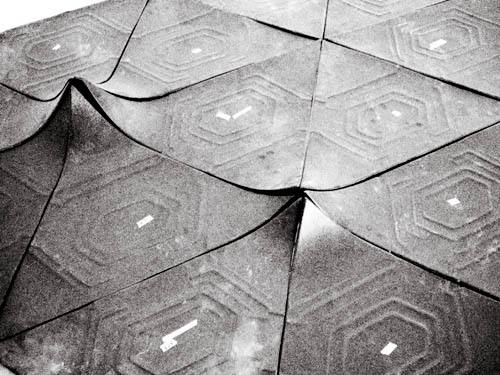Vivarium
 [Image: Inside Vivarium].
[Image: Inside Vivarium].Juan Azulay's Vivarium project opens to the public tonight, Friday, March 26, over at SCI-Arc. Vivarium "explores the relationship between technology, media, and environmental preservation/dereliction," we read, "[...] by placing itself in the midst of processes of intense transformation within the ecosystem it has isolated."

 [Images: Cladding for Vivarium].
[Images: Cladding for Vivarium].The bulk of the exhibition space will feature a "sunken pyramid" that houses the "vivarium"; the vivarium itself will contain "three types of organisms. Living microorganisms will transform the vivarium’s air-moisture into salt. Robotic-engineered organisms made for the installation will in turn generate heat. Virtual (digital) organisms will mimic the behavior of both the living and robotic microorganisms."
These living/semi-living/replicant/undead/digital organisms will thus transform "a freshwater ecosystem into a brackish one... creating a new hybrid ecology that will grow and self-stabilize throughout the exhibition period of three months."
 [Images: Assembly diagrams for Vivarium].
[Images: Assembly diagrams for Vivarium].I'm reminded of an Ecosphere I had in my work desk a year or two back, a glass sphere inside of which two little shrimp—barely perceptible to the naked eye—swam around living plantlife while I edited articles nearby, only Vivarium blows that up to the scale of installation architecture while simultaneously scattering an oddly post-mortem (or is it pre-?) collection of quasi-organisms into the mix. An aquarium left alone in a VR cave until it thinks it's dreaming.
Azulay will be discussing the project in a public event at SCI-Arc on April 9, so be sure to check that out if you have any questions.





Comments are moderated.
If it's not spam, it will appear here shortly!
Post a Comment